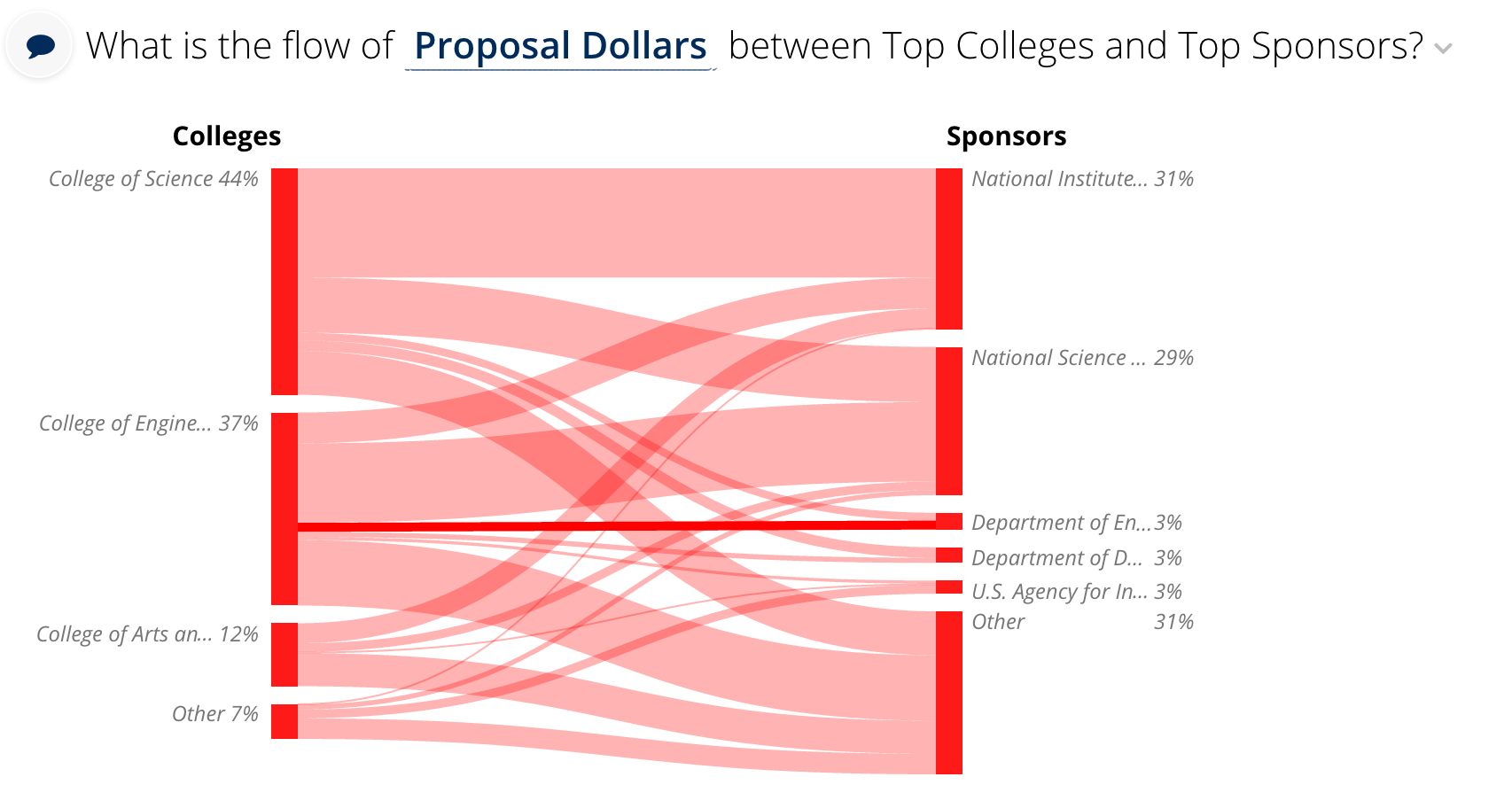Sankey¶
Warning
This help isn’t complete. It may even look terrible. If you want to work on it, see How to Contribute. You can also ask for help in the Juice Slack #documentation channel.
Contents
A Sankey slice is used to present the user with a view of the data and how it changes or flows over some dimensions or time periods. It does not have a default render flavor.
Sankey config¶
Sankey slices support the Common configuration options for all slices. Additional options are:
colorMap¶
Color map for each of the node names (eg. better|same|worse)
| Optional: | Yes, will generate colors dynamically for each nodes defined in
data (colors are coming from either |
|---|---|
| Values: | A map with node names as keys and colors as values |
| Example: | config:
colorMap:
"better": "#f00"
"same": "#00f"
"worse": "#fff"
|
colors (sankey)¶
Predefined array of colors to be assigned to the node
| Optional: | Yes, will use |
|---|---|
| Values: | Array of colors |
| Example: | config:
colors: ["#f00", "#fff", "#CCC"]
|
linkHoverTextTemplateName¶
Template name whose content will be rendered when link is hovered
| Optional: | Yes, see SankeySliceView for default |
|---|---|
| Values: | CSS selector |
| Example: | config:
linkHoverTextTemplateName: #sankey-link-hover
|
nodeHoverTextTemplateName¶
Template name whose content will be rendered when node is hovered
| Optional: | Yes, see SankeySliceView for default |
|---|---|
| Values: | CSS selector |
| Example: | config:
nodeHoverTextTemplateName: #sankey-node-hover
|
nodeTitleTemplateName¶
Template name whose content is displayed right next to the node (node title)
| Optional: | Yes, see SankeySliceView for default |
|---|---|
| Values: | CSS selector |
| Example: | config:
nodeTitleTemplateName: #sankey-node-title
|
timePoints¶
The labels used as a title in the Start/End of the the Sankey flow
| Optional: | Yes, default is |
|---|---|
| Values: | An array of length two, containing strings |
| Example: | config:
timePoints: ["Begin", "Finish"]
|
Flavors of Sankey¶
bi-level¶
The bi-level flavor requires two dimensions that the values will be mapped between, and a single metric represents the value of the connection between the dimensions.

The code for the Sankey bi-level flavor looks as follows (Note: Lists of keys for the first and second dimensions must be supplied via the render configuration. Also, you can include additional metadata as well.)
class SankeyService(NotredameQuarterlyService):
def build_response(self):
division_case_expression, singular='division')
sponsors = ['National Institute...', 'Other']
divisions = ['College of Science', 'Other']
extra_metadata = {'sankey': {'format': '', 'label_plural': 'Colleges',
'label_singular': 'College'}
}
render_config = {'first_dimension_list': sponsors,
'second_dimension_list': divisions,
'metadata': extra_metadata}
recipe = self.recipe()\
.metrics(query_metric)\
.dimensions(top3_sponsor_dim, top3_division_dim)\
.filters(Filter(calendar_begindate >= self.start_date),
Filter(calendar_enddate <= self.end_date))
self.response['responses'].append(
recipe.render('Sankey', flavor='bi-level',
render_config=render_config))
The slice in stack.yaml:
- slice_type: "sankey"
slug: "sankey"
title: "What is the flow of <strong><%= optionChooser1.selectionDisplay() %></strong> between\
\ Top Colleges and Top Sponsors?"
config:
"timePoints":
- "Colleges"
- "Sponsors"
data_service: "dataservice.SankeyService"
Any additional dimensions and metrics are not included in the output in any way.